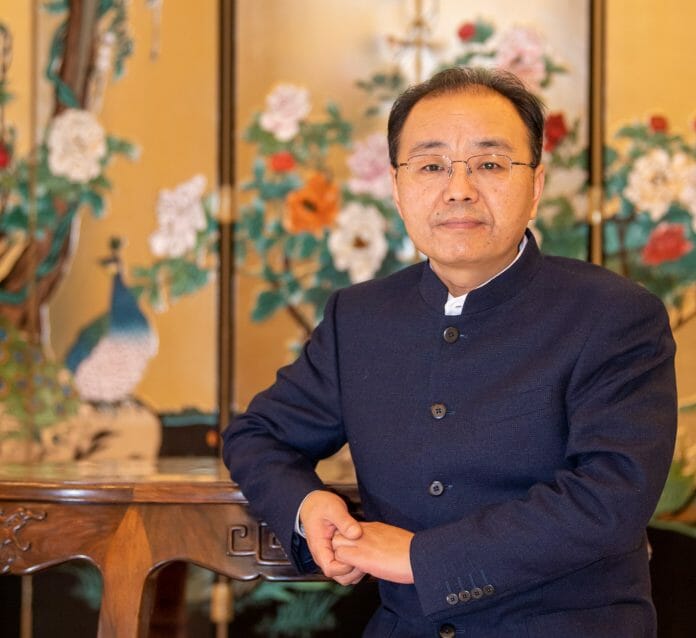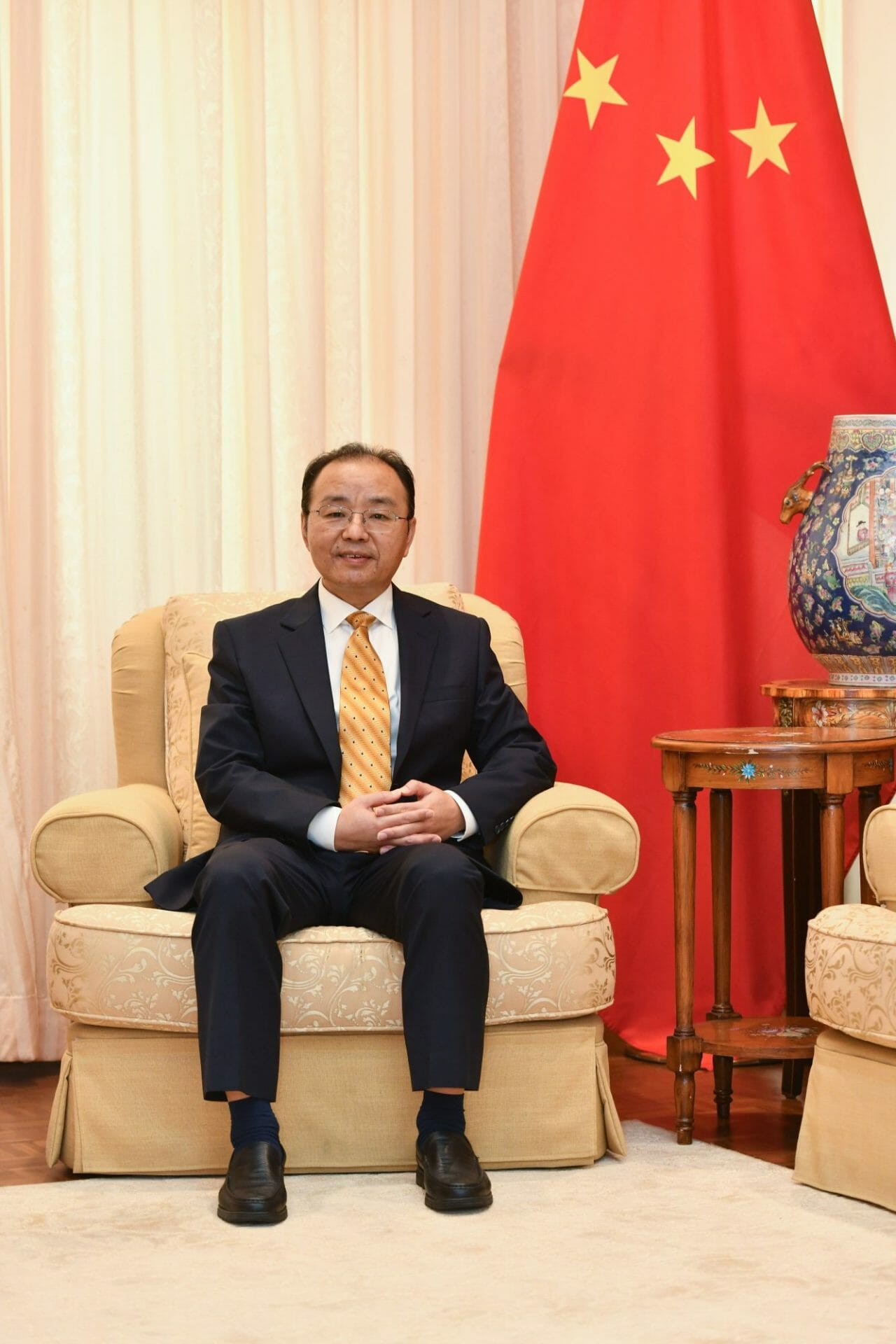Anyone who pays attention to recent global developments would notice that China has been opening its doors for high-level diplomatic meetings since the conclusion of the Chinese Communist Party (CCP) 20th National Congress on Oct 22 this year. The recent G20 Summit in Bali and APEC Summit in Bangkok has definitely shown China’s seriousness about diplomacy.
BusinessToday met exclusively with the Ambassador of China to Malaysia His Excellency Ouyang Yujing to delve into the relationship between China and Malaysia on aspects of trade, education and cultural exchanges.
BT: On bilateral trade between China and Malaysia, could you briefly tell us about the trade figures between the two nations over the last two years. What are the economic and business trends developing in the dealings between the two countries?
Ambassador: Throughout the 48 years since the establishment of China-Malaysia diplomatic ties, no matter how the international landscape changes, China-Malaysia friendly relations remain consistent. Pragmatic cooperation across various sectors have been progressing steadily with bilateral trade and investment experiencing rapid growth, and China has been Malaysia’s largest trading partner for 13 consecutive years. In 2021, China-Malaysia bilateral trade surged 34.5% year-on-year to hit a new high of US$176.8 billion. According to China Customs data, from January to August 2022, total bilateral trade between China and Malaysia reached US$131.2 billion, which is a 21.2% increase compared to the same period last year; China exports to Malaysia rose 30.8% year-on-year to US$59.92 billion; China imports from Malaysia increased 14% year-on-year to US$71.28 billion. Currently, the trade structure between the two sides has been continuously optimised, and the industrial chain and supply chain are more closely integrated.
This year marks the first year of the Regional Comprehensive Economic Partnership (RCEP) coming into force. Malaysia has also completed the ratification process of the Comprehensive and Progressive Agreement for Trans-Pacific Partnership (CPTPP). These agreements will further enhance regional economic integration, as well as bilateral trade and investment facilitation between China and Malaysia. We can see that the high-level free trade environment brought about by RCEP will enhance deeper integration of trade, industry chain and supply chain between China and Malaysia, drive regional digital trade development, and facilitate the continuous optimisation of the overall business environment. China-Malaysia deep cooperation in trade and economy is not only a boon to Malaysia’s post-pandemic economy recovery, but also a boost for Malaysia’s economy.
BT: Many Southeast Asian countries are economically connected with China somehow. As Malaysians we put our focus on China’s economic growth too. Lately, there has been a lot of naysayers talking about the economy in China right now. The property woes, the zero-Covid policy have cooled the economy somewhat. How would you answer these claims? How can China ensure its economy will be up-and-running again this year? Or rather hitting its 5.5% GDP growth target?
Ambassador: At the recently concluded 20th National Congress of the Communist Party of China, General Secretary Xi Jinping delivered a report of great importance which summarises China’s extraordinary achievements in the new era, and highlights the historic leap of China’s economic strength in the past ten years. China’s GDP has grown from 54 trillion yuan to 114 trillion yuan to account for 18.5% of the world economy, rising from 11.3%. China has remained the world’s second largest economy.
China’s contribution to global economic growth averaged over 30 percent for years, acting as the strongest engine of world economic growth. China’s GDP per capita has increased from 6,100 US dollars to 12,500 US dollars, already approaching the threshold of high-income countries. China’s manufacturing value added (MVA) has increased from 16.98 trillion Chinese Yuan in 2012 to 31.4 trillion Chinese Yuan in 2021, with its global share rising from 22.5% to nearly 30%. China remains to be the largest manufacturing country in the world for 12 consecutive years. The balance of China’s foreign exchange reserves is 3.25 trillion US dollars, ranking first in the world for years. The current COVID-19 cases in China are still scattered across various places throughout the country.
The task of prevention and control is an arduous one. At the current stage, sticking to the dynamic zero-COVID policy remains the best option for China to control outbreaks in a timely manner. Affected by the COVID-19 pandemic and international environment, among other factors, China’s economy faces greater downward pressure. We have taken a series of effective measures that have stabilised markets and reinforced the economic stability and prospects.
According to latest figures by the National Bureau of Statistics, China’s GDP grew 3% year-on-year in the first three quarters of this year. China’s development still has an abundance of favourable conditions as its resilient economy comes with strong outlook and vigour. The fundamentals of long-term prospects remain unchanged. China is still an important stabiliser and engine for global economic growth.
The world, the times and history are changing in unprecedented ways. China will adhere to the fundamental policy of opening-up, pursue an open strategy based on mutual benefit and win-win results, continue to provide new opportunities for the world with China’s new development, facilitate the building of a world economy that is open, and better benefits peoples of all countries.
BT: What would you say to the claim that why is there so much trade but a comparatively low FDI from China into Malaysia?
Ambassador: In recent years, China has been the largest source country of investment in Malaysia’s manufacturing sector. According to statistics from Malaysian Investment Development Authority (MIDA), China is the country with the largest investment in Malaysia’s manufacturing sector for 5 consecutive years from 2016 to 2020. Based on China’s official statistics, as of December 2021, China’s total foreign direct investment (FDI) in Malaysia is US$11.81 billion, and Malaysia is an important investment destination for Chinese enterprises. On the other hand, Malaysia’s total investment in China has reached US$7.99 billion, which is the second highest among ASEAN countries. According to Malaysia’s official statistics, in the first half of 2022, out of the total approved foreign direct investments of RM87.4 billion in Malaysia, RM48.6 billion came from China, which makes up 55.6% and is the largest source of FDI in Malaysia. In regard to areas of investment and cooperation related to Chinese enterprises in Malaysia, the focus in the past has been on industries surrounding daily necessities and textiles, and is now shifting towards areas such as digital economy, green development, Internet of Things (IoT) and biotechnology.
For instance, Alibaba’s Digital Free Trade Zone (DFTZ), GDS Holdings’ data centre campus, and the collaboration between Geely and Proton in the automotive sector, among others, have given a boost to Malaysia’s companies and economic development, as well as enriching the highlights of China-Malaysia mutually beneficial cooperation.
As an important country along the 21st century Maritime Silk Road, Malaysia, with its strategic geographical location and friendly business environment, is an ideal investment hotspot. Chinese enterprises could make progress here. In the post- pandemic era, China stands ready to deepen cooperation across various areas including high-end manufacturing, digital economy and modern agriculture, as well as encourage more Chinese enterprises to invest in Malaysia, so as to better realise mutual benefit and win-win results.
BT: How do you see the positive effects of BRI on Malaysia?
Ambassador: After President Xi Jinping proposed the Belt and Road Initiative in 2013, it has received enthusiastic response and extensive participation from the international community. China has signed Belt and Road cooperation documents with over 140 countries and more than 30 international organizations. The relevant cooperation ideas and propositions have been written into outcome documents of various international organizations
including the United Nations. The Belt and Road Initiative has become the most popular international public good and platform for international cooperation.
Although the Belt and Road Initiative originates from China, its opportunities and outcomes belong to the world. According to a World Bank report, the Belt and Road Initiative will lift 7.6 million people in the participating countries out of extreme poverty, and 32 million people out of moderate poverty, whereas trade will increase between 2.8 and 9.7 per cent for Belt and Road participating countries, and between 1.7 and 6.2 per cent for the world, with global income to rise between 0.7 and 2.9 per cent.
Malaysia is one of the first countries to support and participate in the Belt and Road Initiative, and is one of the earliest countries to reap the benefits. The number of Chinese enterprises coming to invest in Malaysia has been growing, bringing a slew of advanced technology and managerial experiences, building numerous infrastructure projects and creating huge numbers of job opportunities. The “Two Countries, Twin Parks” and the East Coast Rail Link (ECRL) serve as flagship projects of China-Malaysia Belt and Road cooperation. At the Malaysia-China Kuantan Industrial Park (MCKIP),12 tendered projects alone have created about 20,000 jobs for locals. Over 1,500 local entrepreneurs have participated in the ECRL project, which will provide training opportunities for 5,000 youths in the East Coast, as well as stimulate economic growth and benefit the locals.
Next year will mark the 10th anniversary of the Belt and Road Initiative, as well as the 10th anniversary of the establishment of comprehensive strategic partnership between China and Malaysia. Standing on a new starting point, China will continue to practise the principles of extensive consultation, joint contribution and shared benefits, drive high-quality Belt and Road development between China and Malaysia, and take bilateral relations to new heights.
BT: On aspects of cultural and educational ties, can you share with us the figures on the number of Malaysians pursuing their studies at higher learning institutions in China over the last 5 years. What do these numbers show, in terms of are there more students pursuing science and technology courses as against humanitarian studies, for example?
Ambassador: China’s colleges and universities of all types and levels welcome Malaysian students to study in China. Malaysian students are welcome to enrol in the relevant institutes to pursue the subject they are interested in. Based on our understanding, nearly 10,000 Malaysian students make their way to China every year for studies across various education levels such as college, undergraduate, masters and doctorate, encompassing formal and non-formal education. China even offers qualified students different bursaries and financial assistance such as Chinese Government Scholarship, Local Government Scholarship and higher education scholarship.
Since the pandemic, the number of students from China in Malaysia has not declined but has increased, making up the bulk of foreign students in Malaysia.
According to Malaysia’s data published in March 2022, there were 28,800 students from China studying in Malaysian higher learning institutes in 2021, accounting for 29.6% of total foreign students in Malaysia. Higher education exchanges and vocational education cooperation have emerged as new highlights of the two countries’ educational exchanges and cooperation in recent years. We will continue to strengthen student exchanges and interactions between the two countries, amplify high-level talent joint-training and cooperative scientific research, and elevate bilateral educational exchanges and cooperation to continuously achieve new heights.











